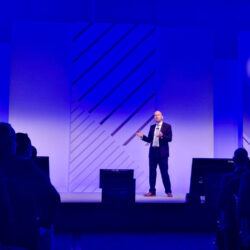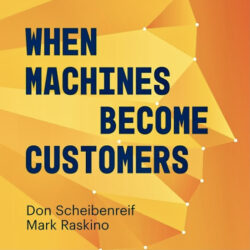Tom Enright, Gartner: ‘In turbulent times, use an offset strategy’

How should companies involved in supply chain act at a time of accelerating change and an endless succession of disruptions and urgent challenges? During the opening presentation at the Supply Chain Symposium in London, Tom Enright, Vice President of Supply Chain at Gartner, advised using what he called an ‘offset strategy’.
By Martijn Lofvers
When you first hear the term ‘offset strategy’, you might initially think of reducing carbon to offset emissions elsewhere. But Tom Enright clarified that the strategy he referred to meant turning the existing circumstances to your advantage, just as you would in a judo match to cleverly avert an attack by your opponent. In other words, this kind of offset strategy for companies is more military in nature and has echoes of David’s successful defeat of the much larger Goliath.
“Choose the less trodden path,” Enright advised. “It’s time to stop copying others.” The offset strategy consists of three steps: sense, shift and steer. This is reminiscent of the US Air Force’s 2006 military concept of Sense & Respond (S&R), which was derived from a business strategy developed by IBM to adapt to a rapidly evolving environment. During his presentation, Enright played a short video of a flock of starlings rapidly changing direction at sunset: “This is how starlings trick birds of prey.”
Cognitive overload
To illustrate the first step (‘sense’), Enright asked the audience to close their eyes and listen. Sound effects in the auditorium created the illusion that everyone was in a car with their own family members, bombarded by ever-more alerts from satnav systems and smartphones, which eventually resulted in a collision. “We have all just experienced cognitive overload due to increasing complexity,” Enright explained to the audience when they reopened their eyes, still slightly stunned. “It’s similar in our day-to-day supply chain activities; it’s as if we’re driving, repairing and innovating the car, all at the same time.”
That led on to the second step, ‘shift’: simplify along the lines of ‘less is more’. “We need to put constraints on decision-making,” Enright said. “At the South American online supermarket Mercado Libre, it’s clear to everyone which decisions they should make themselves and which ones they should escalate to senior management.” This brought to mind the German military doctrine of Auftragstaktik, in which the goal is clear but the soldiers, who are trained in self-reliance, can decide for themselves how to achieve it.
Just the Customer
Tom Enright continued: “Dare to start saying no to meetings that are not business-critical to a project.” This advice is indirectly related to US General Eisenhower’s matrix for determining the urgency and importance of tasks. “By delegating or ignoring unimportant tasks, you create the necessary breathing space,” he added. “Just in Time is no longer the dominant narrative for supply chain management; it’s now ‘Just the Customer’. Supply chain is no longer merely about enabling products to be delivered, but also about meeting customer needs and achieving desired outcomes.”
For the third step (‘steer’), Enright stated that the use of machine learning (ML) and other artificial intelligence (AI) is increasingly necessary. “Computer manufacturer Lenovo applies ML and AI to 800 data sources for predictive analysis. This has reduced the decision-making time by over 50% and contributed $26 million to profit growth. So implement AI in parallel with your existing processes and switch when it works. It’s essential for a company to imagine the future and how it can create value in it. Train your employees in digital technology before you need it. Unconventional approaches are also part of an offset strategy,” concluded Enright, whose compelling keynote once again highlighted the strategic importance of scenario management.









